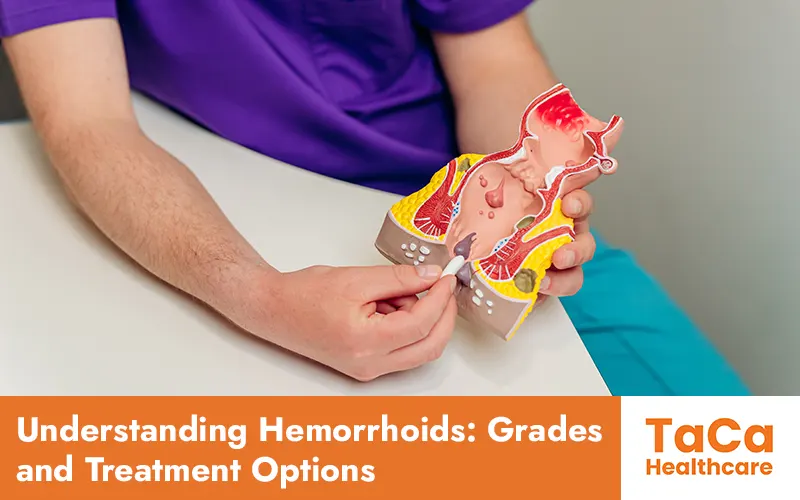Hemorrhoids, commonly known as piles, affect millions of people worldwide. While often uncomfortable and inconvenient, understanding the condition and available treatment options can alleviate distress and improve quality of life. From minimally invasive procedures to innovative laser therapies, modern medicine offers a range of solutions to address hemorrhoidal discomfort.
What Are Hemorrhoids?
Hemorrhoids are swollen veins in the lower rectum or anus. They can be internal, located inside the rectum, or external, found under the skin around the anus. Factors such as straining during bowel movements, chronic constipation or diarrhea, obesity, pregnancy, and aging contribute to their development.
Grades of Hemorrhoids:
Hemorrhoids are categorized into four grades based on their severity:
- Grade I: Internal hemorrhoids that bleed but do not prolapse.
- Grade II: Prolapse with straining during bowel movements but retract spontaneously.
- Grade III: Prolapse with straining during bowel movements and require manual reduction.
- Grade IV: Prolapsed hemorrhoids that cannot be reduced manually and may be thrombosed or strangulated.
Treatment Modalities:
Apart from conventional Open Surgical treatment methods, there has been a significant upgradation in the way Hemorrhoids are treated now. The new modalities of treatment are relatively less time consuming, minimally invasive and have faster recovery timeline and also lesser postoperative pain.
Minimally Invasive Day Care Surgery for Hemorrhoids (P/iles): This outpatient procedure involves the removal of hemorrhoids using techniques like rubber band ligation, sclerotherapy, or infrared coagulation. It offers quick recovery and minimal discomfort.
Lasers for Hemorrhoids: Laser treatment for hemorrhoids involves the use of focused light energy to shrink and remove hemorrhoidal tissue. It is less invasive than traditional surgery and results in minimal bleeding and faster healing.
Minimally Invasive Procedure for Hemorrhoids (MIPH): Also known as stapled hemorrhoidopexy, MIPH involves stapling the prolapsed hemorrhoids to their normal position within the rectum. It reduces blood flow to the hemorrhoidal tissue, promoting healing and symptom relief.
Transanal Hemorrhoidal Dearterialisation (THD – Doppler Surgery) for Hemorrhoids: THD is a minimally invasive procedure that uses Doppler ultrasound to locate and ligate the arteries supplying blood to the hemorrhoids. By reducing blood flow, it effectively shrinks hemorrhoids and alleviates symptoms./
Consultation and Second Opinion:
If you’re experiencing symptoms of hemorrhoids or have been recommended a treatment, it’s essential to consult a qualified surgeon for proper evaluation and personalized care. Dr. Prashant Meshram specialises in general and laparoscopic surgery, offering expertise in managing hemorrhoidal conditions.
Conclusion:
Hemorrhoids are a common source of discomfort for many individuals, but effective treatment options exist to address symptoms and improve quality of life. From minimally invasive procedures to advanced laser therapies, patients can find relief tailored to their needs. If you’re struggling with hemorrhoids, don’t hesitate to seek professional advice and explore treatment options for a happier, healthier life.






